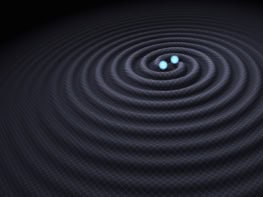
The US Department of Energy (DOE) has given the green light to a major upgrade of Argonne National Laboratory’s Advanced Photon Source. Costing $815m, the upgrade will see the “brightness” of the synchrotron boosted by up to three orders of magnitude allowing researchers to study materials and processes at an unprecedented level.
There are around 50 synchrotron light sources in 23 different countries around the world. These machines work by accelerating electrons to high energies and then injecting them into a circular storage ring where they emit powerful beams of X-rays. The X-rays act as a microscope and can be used to study the structure and properties of materials in a range of disciplines, from condensed-matter physics to biology.
The APS has been operating for almost 25 years and is currently used by around 5500 researchers every year. Formal work on the upgrade – dubbed APS-U — began in 2010 and in 2016 the DOE awarded the project “critical decision 1”, which give officials the go-ahead to carry out full design work, which was approved two years later.
The DOE has now given the go-ahead for construction and for officials to begin procuring equipment for the upgrade. It will involve increasing the brightness of the X-ray beam by around 100-1000 times of that of the existing APS. This will be achieved by replacing the storage ring with a new array of magnets that both steer the beam and focus it. The upgrade will also make use of a new type of “multi-bend achromat lattice” configuration, which has been developed at the European Synchrotron Radiation Facility in Grenoble, France, and will be incorporated into upgrades at other synchrotrons worldwide such as at the ESRF itself as well as SPRING-8 in Japan and PETRA IV in Germany.
Boosting brightness
Removal of the APS’s storage ring is set to will begin in June 2022 and take around a year to complete before the machine comes back online for users. It is hoped that the beam current in the new ring will double to 200 mA with the new magnet configuration resulting in a reduction in the electron beam’s “emittance” – a measure of the spread of the particles in a beam — by a factor of 70 from its present value of around 3100 pm (10-12 m). Diamond Light Source – when a tool becomes a gem
Once operational it is hoped that the brightness of the APS-U at X-ray energies of 20 keV will be around 300 x 1020 compared with 0.6 x 1020 at the APS. The upgrade will also see a set of new beamlines installed, which are designed to take advantage of the upgraded brightness.
“The upgraded APS will enable science at a completely new scale, enabling discoveries across a wide range of research from microelectronics to polymers to quantum,” says Argonne director Paul Kearns. “It’s an exciting time as Argonne is building two powerful facilities for the world’s scientific community. Together, the upgraded APS and our Aurora exascale computing system will provide powerful new capabilities to accelerate science and technology.”
“We are very happy to learn that the APS upgrade is now in full swing, and that the construction of the APS-U new storage ring with unprecedented small horizontal emittance is well on its way,” ESRF director general Francesco Sette told Physics World. “The upgrades [at facilities worldwide] will open up a new page in synchrotron X-ray science to the benefit of the international science and industrial innovation communities.”



